|
11th July 2014, Minera Quarry
An outing to see the Marsh Fragrant Orchids and Broad-leaved Helleborines resulted in a chance finding. The BLH can be seen on a steep slope in, and behind, the hedge on a lane leading off the quarry through a gate. Only a few flowers were open, but higher up, and exposed, are some Pyramidal Orchids. One of these on close examination had very little or no lobing to the lip, which makes it an Anacamptis pyramidalis v. emarginata. Though said to be scarce by Harrap, others have said that they occasionally come across examples. The are more Broad-leaved Helleborines along the left hand side of the track leading into the quarry. We had not spotted these before, but they had clearly been there some years and had just been overlooked.
The Marsh Fragrants are doing very well this year, especially in the fenced off area beneath the rock face. This is becoming colonised by silver birch, and is very reminiscent of the Neumann's Flash site in Northwich, or at least how it must have been a few years ago. Because its a sunny day, you can smell the fragrance of these orchids from several feet away.
The grassy rise to the right of the stream and beyond the pond now seems to have lost its colonies of Marsh Orchids. All that could be seen were the leaves and fruiting stems of a few Common Spotted Orchids and Common Twayblades. Anything else may have been grazed by sheep and cattle.
There is still a lot of this site that we haven't explored, but on a sunny day it gets very hot here, and elsewhere may likely be more of the same.
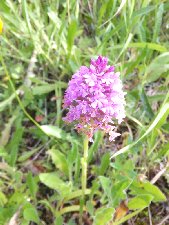 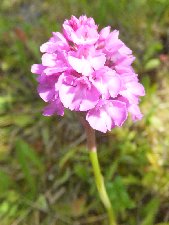 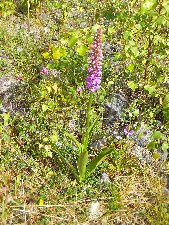 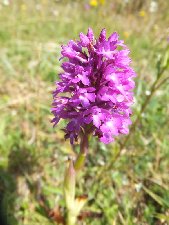
a typical Pyramidal The emarginata variety a deep pink example
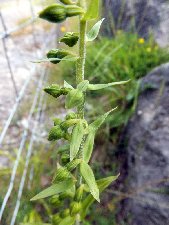 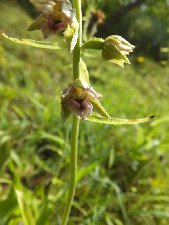
the Broad-leaved Helleborines
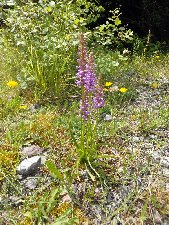 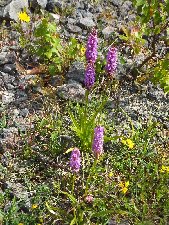  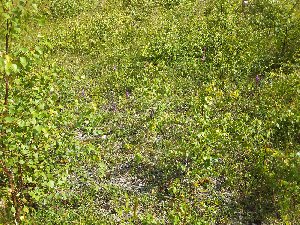 Marsh Fragrant group another group a large example the birch habitat 2014 . Marsh Fragrant group another group a large example the birch habitat 2014 .
6th July 2014, Alyn Waters Country Park
Another visit to another local site. The `mystery' Helleborine turns out to be Green-flowered Helleborines, possibly degenera. They are not going to open there flowers much and the cup looks to be poorly formed. Some appear to be diseased or something, with blotchy sepals. This colony is larger than originally anticipated. More spikes are now apparent. A search for a rather robust specimen seen in 2013 in the woods revealed it to be largely eaten; Green-flowereds seem to be eaten in preference to the Dune Helleborines which are largely untouched.
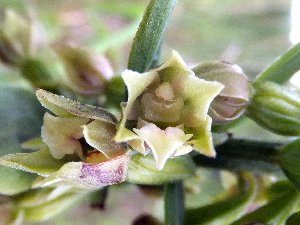 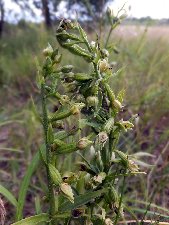 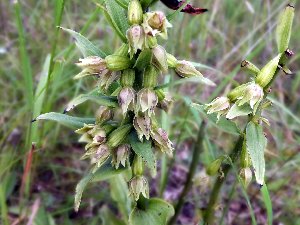
The Dune Helleborines are just coming into flower. One plant has its flowers virtually infested with little insects, though there is no suggestion they are pollinating it. One of the atypical specimens from 2013 was located and it still shows some Broad-leaved characteristics such a main leaves rotating around the stem, rather than in two rows. The flowers do seem to be more typical
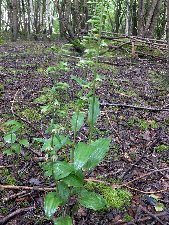 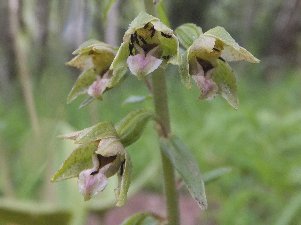 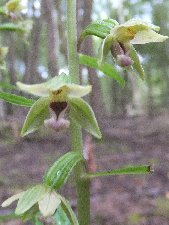
The Marsh Fragrant Orchids are also just coming out, but certainly do not resemble those at Neumann's Flash for density of inflorescence and height. They grow in about the same degree of light level so that is not much of a factor. Interesting to see a beetle showing an interest in one flower.
One other notable sighting is a Common Spotted Orchid with unusually shaped, almost oval, leaves.
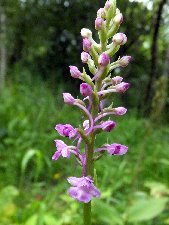 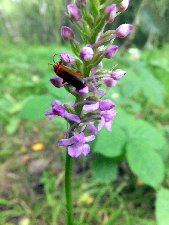 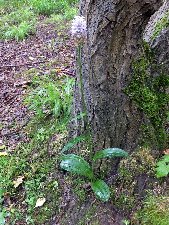
5th July 2014, Marford Quarry
A trip here has become an annual event; mainly because it is on my doorstep. The Green Flowered Helleborines are not quite out (as far as they do), but 2014 looks like a bit of a poor year for them. Just one pair found at the first location, none at a second, and again just one at a third. What was a good site for them, found in 2013, has changed. They grew in a sort of glade, under the cover of a low lying branch, but this has gone (perhaps the spring winds). They are still growing there, but most have been nibbled badly, with no flower spike and reduced leafage. There may be more growing here between these sites but finding them is a challenge.
A previously un-noticed colony of Common Spotted Orchids, alongside the railway was on its way out.
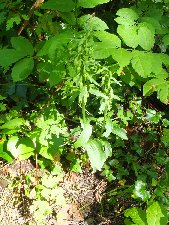 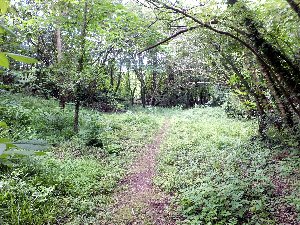 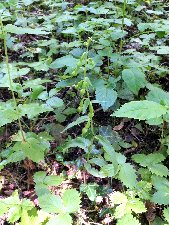 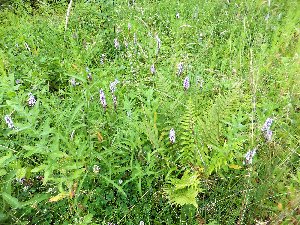
4th July 2014, Neumanns' Flash, Northwich
According to the Harraps this site has hosted over a thousand Marsh Fragrant Orchids some years. We visited the area last year in search of these, but somehow missed the spot, and re-visited another part of the Anderton Country where we had noted a few some years ago. With more specific location information, and having seen the emerging flower spikes there early in June, we came back at the right time. The strip of land between Neumann's and Ashton's Flashes essentially a path with silver birch scrub on either side. The orchids tend to grow in the vicinity of the bird hide. The Fragrants generally are large robust specimens, easy to spot, but certainly not present in their thousands in 2014. A few were smaller and more lax-flowered. Even in the late morning on a somewhat dull day you could smell a single flower's fragrance as you passed nearby.
The lower numbers than promised, combined with few younger plants, made me suspect that perhaps this colony is dying out as the birch grows more dominant. There were still clearings, and the plants did appear to prefer semi-shade at the margins as opposed to open ground. The soil does have the appearances of industrial waste rather than humus, but this will gradually change as other vegetation flourishes. We also noticed a number of flower spikes broken off and the flowers seemingly nibbled off; the rabbits must have learned some tricks.
A small solitary colony of Marsh Helleborine grows at the Flash boundary fence by the bird-hide. These too were starting to flower.
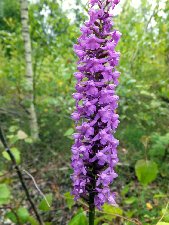 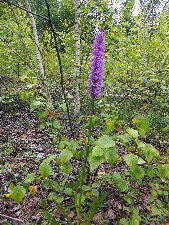 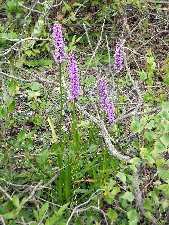
A robust specimen and a rare grouping of Marsh Fragrants
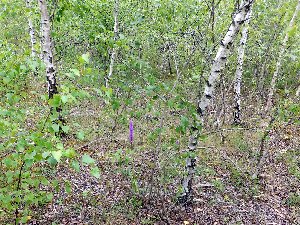 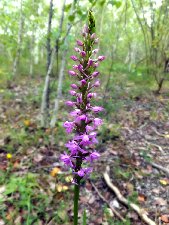
A Marsh Fragrant in situ, and a lax-flowered example
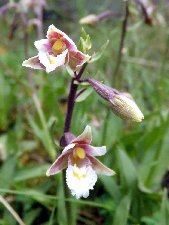 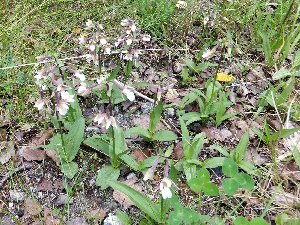
The Marsh Helleborines
4th July 2014, Delamere Forest
Here, last year, we found a helleborine at the end of its flowering period, which someone pointed out looked like a Dune Helleborine. Today we returned to catch it at the start of the flowering period, and it does fit the description for this species. The newly opened flowered flowers showed a lack of viscidium and crumbling pollinia. The ovary was not twisted, the pedicle was violet at the base and the leaves were in two rows down the stem. This is a new location for this species, though growing in the scrub and vegetation lying either side of a path is not typical. It could have colonised here much the same way as has been theorised for those growing in Alyn Waters - wind blown seed from the Newborough plants on Anglesey. Could this be a remnant of a former larger colony? There only 10-20 plants in total. On one side of the path is a pine plantation on sandy soil, but is now overgrown with bracken. The other side is a mere, but 20-30 years ago this too was pines (since reclaimed as a lake). These are more typical habitats of the Dune Helleborines growing in Newborough and Formby (but not Alyn Waters).
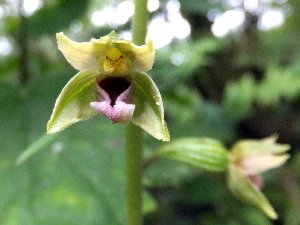 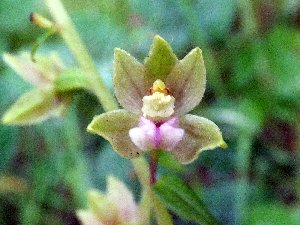
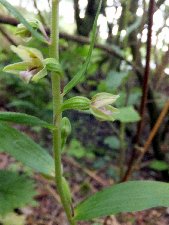 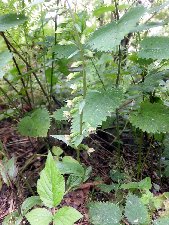 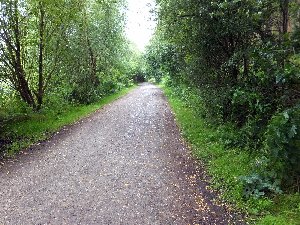
P.S. While there may be some debate remaining on the identification of these as Dune Helleborines, sufficient expert opinion agrees with this from both the photographs and personal visits. See this Bird Forum post (at the top of the page).
P.P.S. This find has been reported to the Cheshire County Recorder and confirmed as a new location for the Dune Helleborine. It should be safe from strimming.
|


































